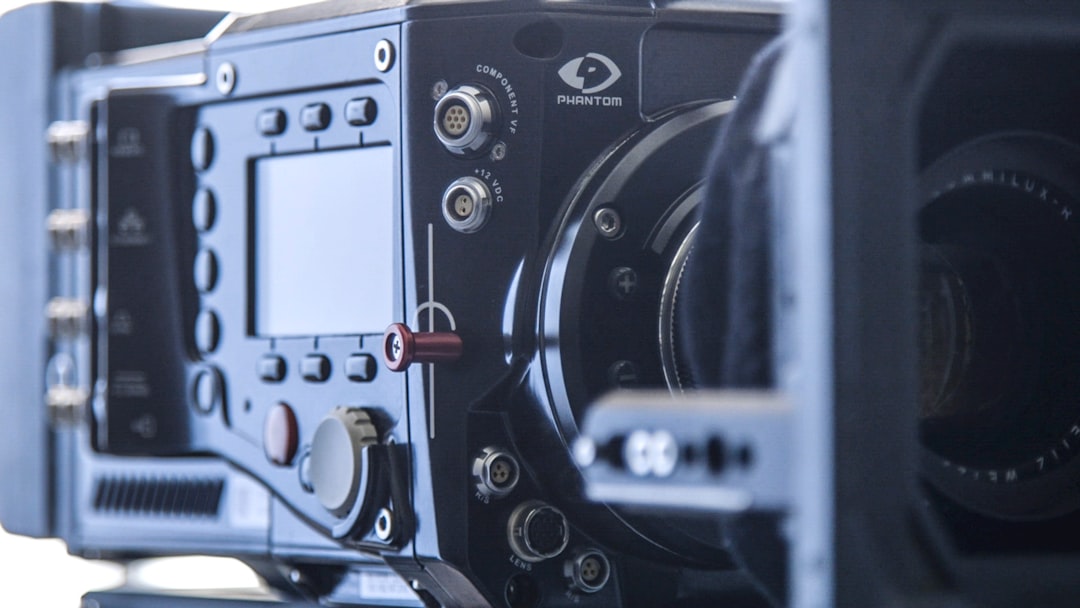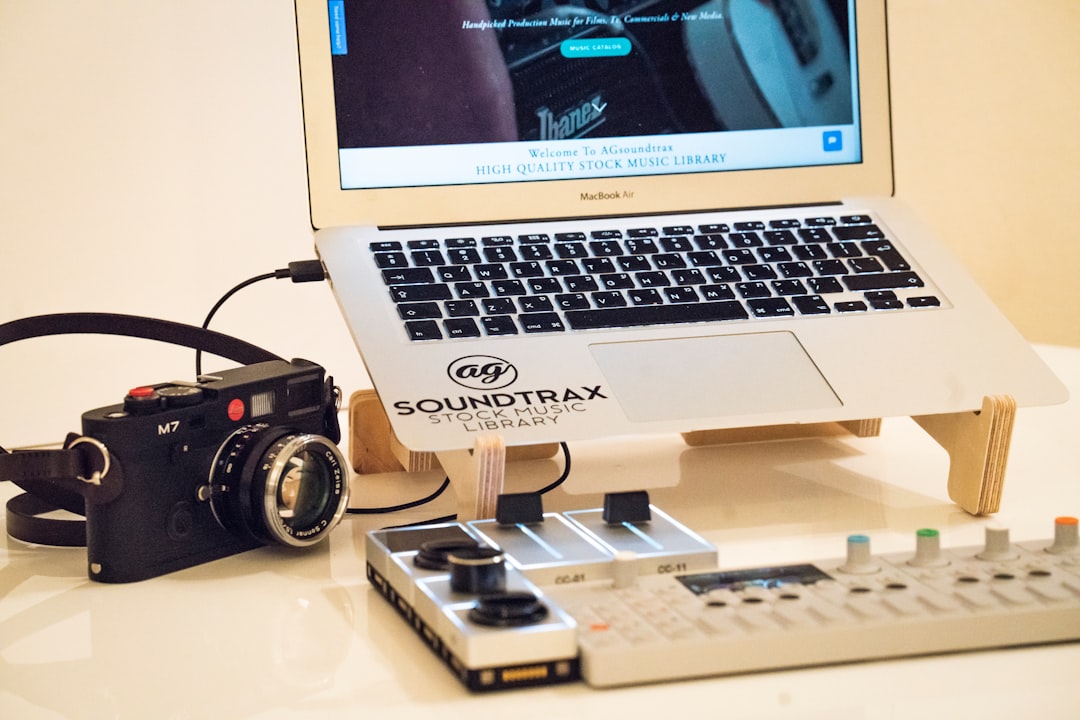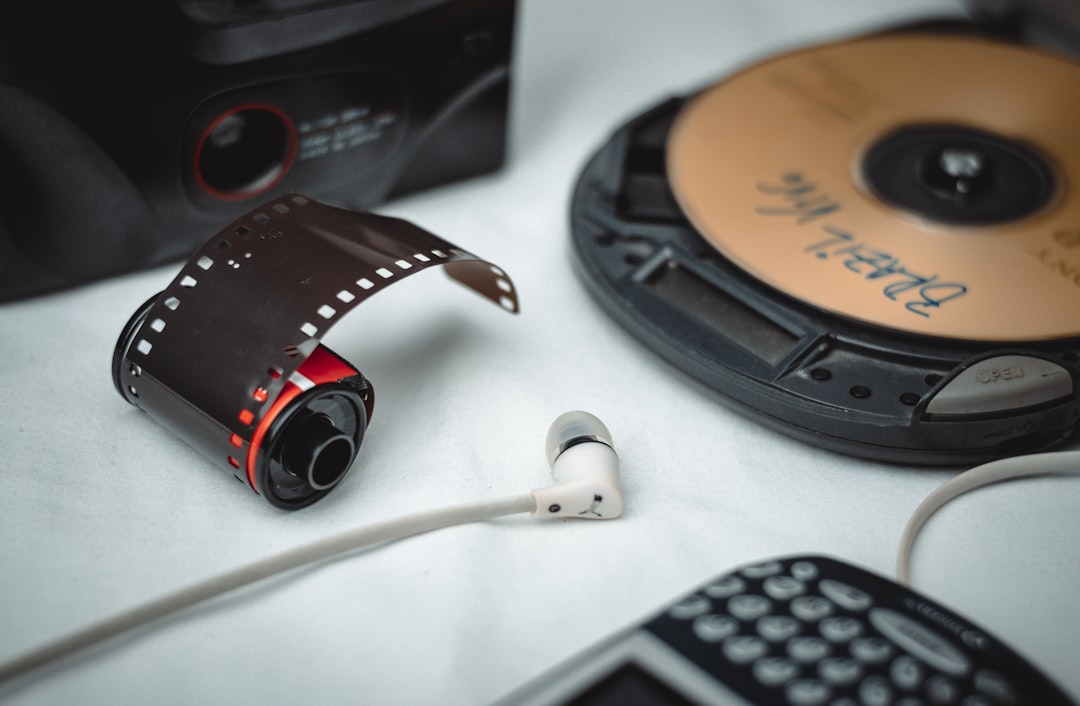

Engage prospects with a scan and streamline customer engagement with FREE QR code marketing tools by Sona – no strings attached!
Create a Free QR CodeFree consultation

No commitment

Engage prospects with a scan and streamline customer engagement with FREE QR code marketing tools by Sona – no strings attached!
Create a Free QR CodeFree consultation

No commitment
QR codes have evolved from a novelty to a strategic powerhouse in bridging offline engagement with online action. For audiovisual equipment repair services, QR codes offer a practical, scalable, and highly effective way to optimize maintenance workflows, support field technicians, and deliver fast service without requiring app downloads or complicated setup.
Traditional audiovisual equipment maintenance is often bogged down by inefficiencies such as paper logs, outdated manuals, and fragmented work orders. These outdated processes slow down repairs and increase the risk of missing critical maintenance, leading to avoidable downtime, higher costs, and reduced customer satisfaction. Pain points like lost high-value prospects for service contracts, lack of visibility into asset interactions, and outdated CRM account data are common, creating operational blind spots that impact revenue and retention.
Modern QR code solutions such as Sona QR overview can address these challenges by providing instant access to digital records, capturing account-level engagement, and enabling seamless data flow into support and CRM systems. Scannable codes on assets and service documents empower field technicians, unlock actionable insights about equipment usage, and ultimately deliver faster, more targeted service. Providers can now stay ahead of problems rather than react after issues occur.

Repair teams and facility managers often face missed handoffs, incomplete repair logs, and outdated documentation, meaning valuable maintenance data is often lost or fails to reach decision-makers. These gaps translate into missed service opportunities, increased costs, and more frequent equipment downtime. When your technicians cannot instantly access the service history for a projector or DSP, a 15-minute fix can turn into a two-hour diagnostic. When customers cannot find warranty terms or request help in the moment, they delay repairs and reduce satisfaction.
QR codes bridge the gap between physical touchpoints and digital outcomes, enabling AV service organizations to gain real-time equipment insights, reduce manual admin work, and track engagement across every asset and service call. The result is a closed-loop system where every scan updates ownership, service history, and next steps. Compared to paper binders and emailed PDFs, dynamic QR destinations make content management simple and ensure everyone is working from the latest information.
To drive high-impact outcomes:
Industry leaders adopting QR strategies remove friction that creates churn or limits upsell and cross-sell. Every interaction is now attributed to the correct account and service journey, which supports contract renewals and proactive outreach.
Example: Replace paper service logs with QR codes that link to digital records, video guides, and warranty info. Technicians scan at the rack, see the full maintenance history, and follow a short clip to update firmware. Customers scan the invoice to leave feedback or request a quote for an extended service plan using Google Forms QR. QR code management tools ensure nothing falls through the cracks, connecting equipment, people, and support workflows for both speed and accountability.

Audiovisual equipment repair services often lack complete visibility into each asset’s lifecycle and history. Without real-time access and unified records, field teams may be unaware of previous repairs or evolving customer pain points. Combined with incomplete or outdated CRM data, this leads to missed segmentation, customer frustration, and higher costs. The more complex the environment, such as multi-room campuses or large venues, the greater the risk that analog processes break down.
Integrating QR codes directly onto equipment and service materials brings every physical touchpoint into a unified, trackable digital ecosystem. This creates a reliable bridge between offline activity and online data capture, unlocking proactive maintenance and more accurate planning. The benefits are immediate for technicians, service managers, and customers alike.
Appointment cards, invoices, onsite signage, and equipment tags all become smarter when paired with QR codes. A projector’s label can open a guided troubleshooting flow; a repair receipt can link to a feedback survey and a contract renewal quote; a wall plate next to a podium can provide immediate instructions for the most common user errors.

With workflows ranging from on-site diagnostics to remote user support, standardized manual methods often fall short. Fragmented devices, outdated contacts, and siloed access create gaps that waste time and obscure demand. Selecting the right QR format ensures each scan leads to the fastest possible action.
Modern QR code formats address these gaps by enabling AV repair organizations to connect every scan to a specific outcome. Choose formats based on context, user type, and the job to be done during that moment of need.
For audiovisual equipment repair services, web links and pre-filled forms are most frequently used, followed by vCards for escalation contacts and Wi-Fi access in corporate or educational environments. Using a centralized platform to generate and manage these formats keeps destinations consistent and ensures accurate attribution via Sona QR’s use case library.
Growth in AV repair services is often hindered by fragmented account views and incomplete data. Assets live across campuses, auditoriums, retail chains, and corporate sites, while engagement shows up in emails, calls, and on-site visits that rarely sync in real time. This fragmentation leads to duplicated outreach, missed renewals, and underperforming SLAs.
Strategic QR deployment connects field activity to your systems, creating customer-level insights that drive upsell, cross-sell, and retention. When every physical interaction is tied to a digital record, you uncover where demand originates and how best to serve it.
As these touchpoints generate scan data, your organization can classify accounts by behavior. High-scan assets indicate heavy usage or environmental issues, while low engagement might suggest training opportunities. The outcome is a clearer growth strategy and a smoother customer experience.

Operational bottlenecks appear when service histories and user interactions are difficult to access. Without centralized data, repairs take longer, and preventive maintenance gets overlooked. QR-enabled workflows bring clarity to where and why issues occur while reducing effort for both customers and technicians.
Leading AV repair providers use QR codes to merge physical assets with digital service journeys. By anchoring each use case to a measurable outcome, you can quantify the value of adoption and prioritize deployments.
These use cases reduce friction at every stage of the lifecycle. They also supply analytics that inform staffing, inventory, and customer education programs.
Many promising opportunities are missed when account activity is untracked. A facility manager scanning a maintenance label or a technician submitting a part request may never be attributed to a lead profile. Without unified tracking, follow-up lags and marketing cannot target interest with precision. QR codes change that by turning scans into audience signals that plug directly into your CRM and ad platforms.
To convert every equipment touchpoint into audience insights, design QR deployments so that each scan maps to intent, context, and buyer stage. This allows you to segment by need and respond with tailored offers or guidance.
In audiovisual equipment repair services, common distinctions include end users who need immediate help, facility managers who plan maintenance windows, and procurement or IT stakeholders who handle renewals. Each group benefits from different content and call to action based on scan intent.
Many AV service providers rely on print collateral, signage, and field visits that are difficult to measure. When these channels do not connect to digital outcomes, budgets are hard to justify and campaigns underperform. QR codes unify offline and online engagement so that every asset can drive action and generate analytics.
Integrating QR codes into your multichannel strategy turns brochures, signage, and even in-room instructions into gateways for booking, troubleshooting, and education. Use unique codes per placement so you can compare performance and double down on what works.
With a centralized platform to manage codes and performance, you can compare conversion by channel and deployment type. QR codes serve as the offline onramp to your digital engine, while data syncing keeps your CRM current with real-world engagement. For measurement depth, explore offline attribution.
Operational complexity, data silos, and manual follow-up slow down campaigns and obscure results. QR initiatives stall when codes are generic, placements are not field-tested, or analytics are not connected to business outcomes. A structured approach eliminates these pitfalls and ensures that every scan counts.
Use the following steps to plan, launch, and scale QR code programs tied to technician efficiency and uptime gains. Adapt each step to your environment, whether you support corporate campuses, higher education, houses of worship, or performance venues.
Start by aligning each QR initiative to a specific business objective. Examples include booking repairs for priority rooms, enabling warranty lookups for projectors, collecting post-service feedback, or providing quick-start guides at lecterns. Define the target audience and the action you want immediately after the scan.
In audiovisual equipment repair services, a focused use case might be: Scan to schedule preventive maintenance for auditorium AV racks before semester start. Another is: Scan to request emergency support for control room outages with auto-enriched asset details. Clarity at this stage informs code design, placement, and measurement.
Select static codes for fixed, unchanging resources such as a PDF quick-start guide. Choose dynamic codes for anything that requires tracking, A/B testing, or future content updates, such as booking forms, firmware libraries, or rotating promotions.
Dynamic codes are recommended for most service workflows. They allow you to update destinations as products evolve and to gather analytics across time, device, and location. When in doubt, opt for dynamic to maintain flexibility and insight as your program grows.
Design codes with your logo, brand colors, and a clear call to action like Scan for maintenance schedule or Scan to book a technician. Include a short instruction line, especially in low-tech environments, so users understand what they will get by scanning.
Test scannability on common phones, both iOS and Android, at varying angles and distances. Evaluate print size, contrast, and lighting conditions where the code will live, such as inside racks or on podiums. Run a quick pilot with a few clients or rooms before broad rollout to validate user experience and data capture.
Place codes where the need arises. Examples include device labels, rack doors, podium plates, job sheets, invoices, and mailed renewal notices. For large venues, add signage backstage and in control rooms. For campuses, label common rooms and service closets.
Match placement to audience behavior. End users need simple guides near interfaces; facility managers benefit from scheduling links on brochures and emails; technicians need codes on job sheets that open parts ordering or checklists. The more contextual the placement, the higher the scan rate and conversion.
Monitor scans by time, location, and device. Track downstream actions like bookings, ticket submissions, and survey completions. Add UTM parameters to destinations so you can attribute traffic to placements and campaigns inside your analytics stack.
Iterate based on findings. If scans are high but bookings lag, test a shorter form or a more direct CTA. If a room shows frequent scans for the same issue, update the quick-start guide or plan training. Optimization turns QR codes from a convenience into a performance lever.

A core industry frustration is the inability to connect analog service activity to digital business outcomes. Without proper tracking, scans remain isolated events, and there is no way to prove ROI or forecast demand. This makes it difficult to prioritize resources, justify budgets, and drive renewals or upgrades based on evidence.
Robust QR analytics transform a simple scan into a data point in a broader journey. By capturing device type, time, location, and destination behavior, you can map how offline moments influence bookings, SLAs, and revenue. Over time, patterns inform staffing, parts inventory, and proactive outreach that improves both uptime and customer satisfaction.
Platforms such as Sona QR and Sona.com simplify this process. Sona QR captures real-world engagement and delivers granular scan analytics. Sona.com connects those engagements to identities and revenue through buyer journey mapping, CRM syncing, and multi-touch attribution. Together they help AV service teams prove impact, refine campaigns, and prioritize resources where they matter most.
Maintenance leaders often struggle with fragmented data, limited analytics, and manual workflows. Without unique identification for equipment and campaigns, it is nearly impossible to personalize support or evaluate impact. A few best practices can dramatically improve scan rates and the business value of your deployments.
Focus on tips that align with your most common media and buyer journeys. Start small with a pilot, learn quickly, then scale across sites and segments once you have a winning pattern.
Creative deployment examples: In a performance venue, place QR codes inside AV racks that open a quick fault-isolation flow for common audio dropouts. On invoices, include a QR code that lets the client schedule a free system health check, which both improves uptime and surfaces opportunities for service plan upgrades.
Audiovisual equipment repair services face ongoing challenges: incomplete asset visibility, missed engagement, data fragmentation, and the need to unify workflows. QR codes, when integrated into daily operations with intent, address these pain points throughout the customer lifecycle. They connect physical touchpoints to digital systems, remove process bottlenecks, and surface clear opportunities for upsell, retention, and efficiency gains.
Here is the takeaway for AV repair leaders. Treat every scan as a strategic signal. Use those signals to create proactive service, faster resolution times, and more relevant outreach. By linking scans to CRM and revenue, QR codes shift from convenience to competitive advantage.
Audiovisual equipment repair services must meet rising customer expectations and the complexity of modern AV systems while hitting tighter SLA targets. Integrating QR codes into repair workflows helps organizations deliver faster, smarter, and more personalized service. With platforms like Sona QR for code management and analytics, and Sona.com for attribution and journey mapping, every scan becomes an opportunity for growth, turning challenges into measurable wins for your business and improved satisfaction for your customers. Start creating QR codes for free.
QR codes have revolutionized audiovisual equipment repair services by streamlining technician support and enhancing service efficiency. Beyond simplifying access to repair manuals and troubleshooting guides, they empower technicians to deliver faster, more accurate repairs—driving improved customer satisfaction and operational excellence. Imagine technicians instantly scanning a code to access updated equipment histories or instructional videos, reducing downtime and elevating service quality.
With Sona QR, you can create dynamic, trackable QR codes tailored for repair workflows, instantly update resources without reprinting, and capture valuable data on usage patterns to optimize technician training and resource allocation. This seamless connection between offline equipment and digital knowledge transforms every scan into actionable insights and smoother repair processes.
Start for free with Sona QR today and equip your audiovisual repair team with the tools to resolve issues faster, delight customers, and boost your service’s bottom line.
Use QR codes on equipment and service materials to instantly access repair services, schedules, and contact information, which helps locate reliable audiovisual equipment repair providers efficiently.
Common issues include malfunctions in amplifiers, mixers, projectors, microphones, and control processors that need diagnostics, firmware updates, and preventive maintenance to ensure proper functioning.
The article does not specify exact repair costs but highlights that QR code-enabled workflows reduce repair time and manual work, which can lower overall service costs.
Best practices include placing QR codes on equipment to access preventive maintenance schedules and checklists, enabling technicians to log tasks with timestamps and IDs to reduce missed maintenance and extend asset lifespan.
Attach QR codes to equipment and service documents that link to digital records and service histories, allowing technicians to scan and instantly view past repairs, maintenance schedules, and warranty information for faster, more accurate service.
Use Sona QR's trackable codes to improve customer acquisition and engagement today.
Create Your FREE Trackable QR Code in SecondsJoin results-focused teams combining Sona Platform automation with advanced Google Ads strategies to scale lead generation

Connect your existing CRM

Free Account Enrichment

No setup fees
No commitment required

Free consultation

Get a custom Google Ads roadmap for your business






Launch campaigns that generate qualified leads in 30 days or less.
